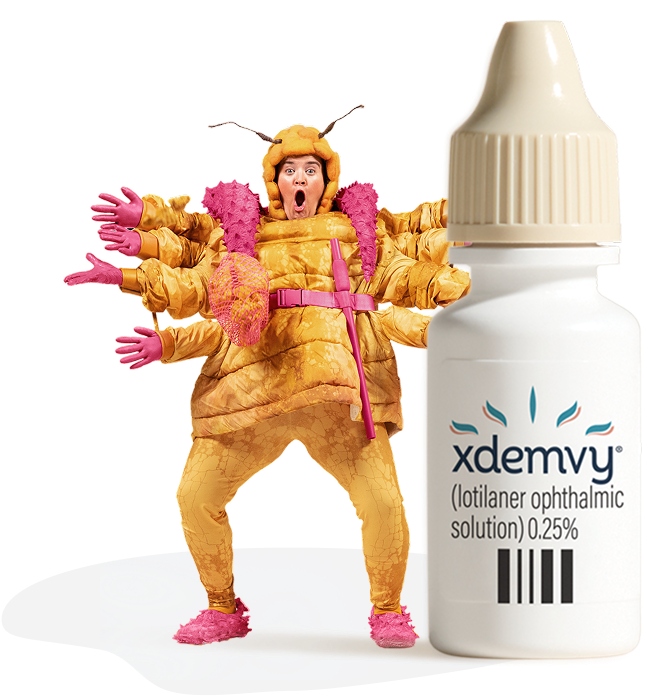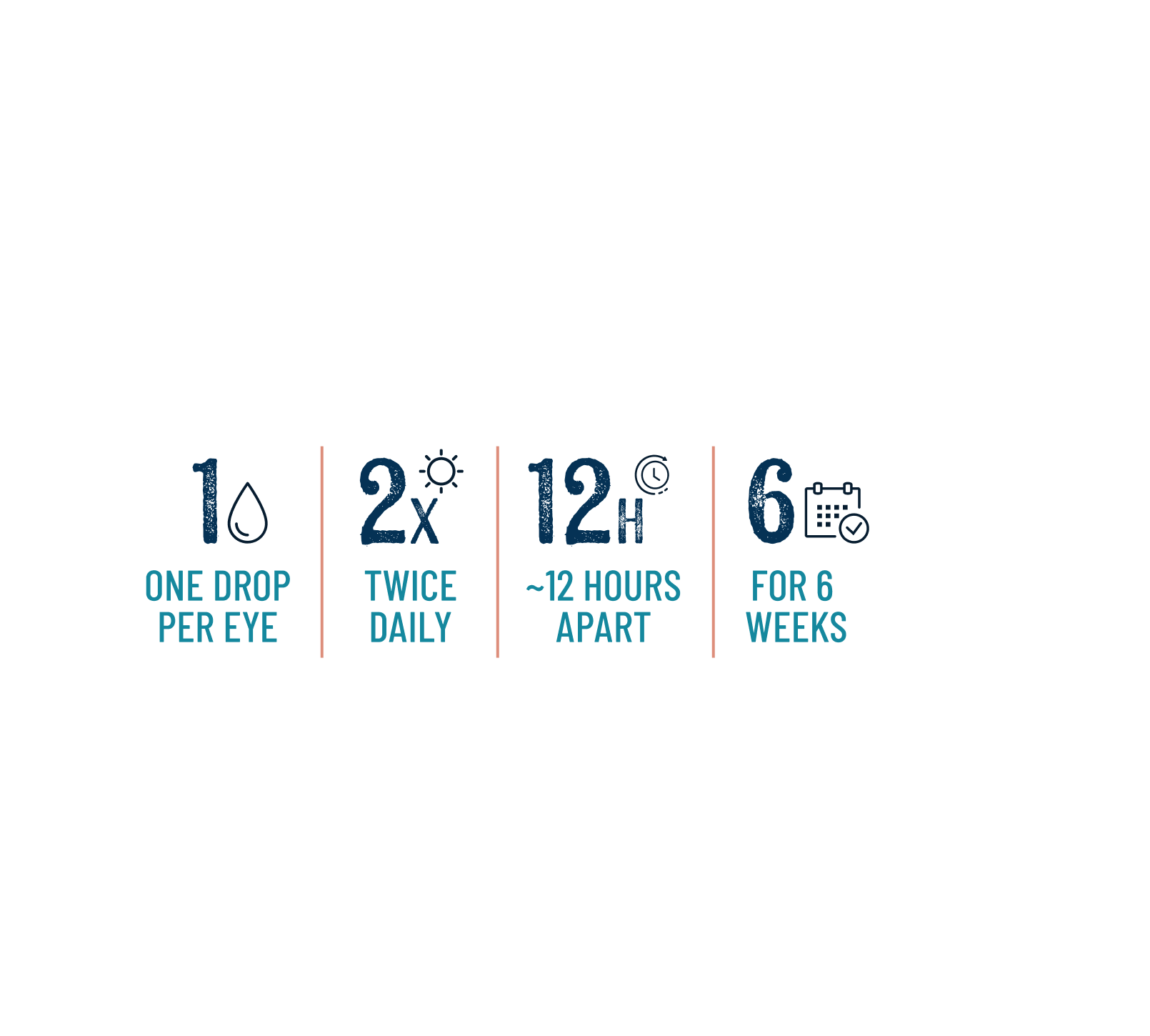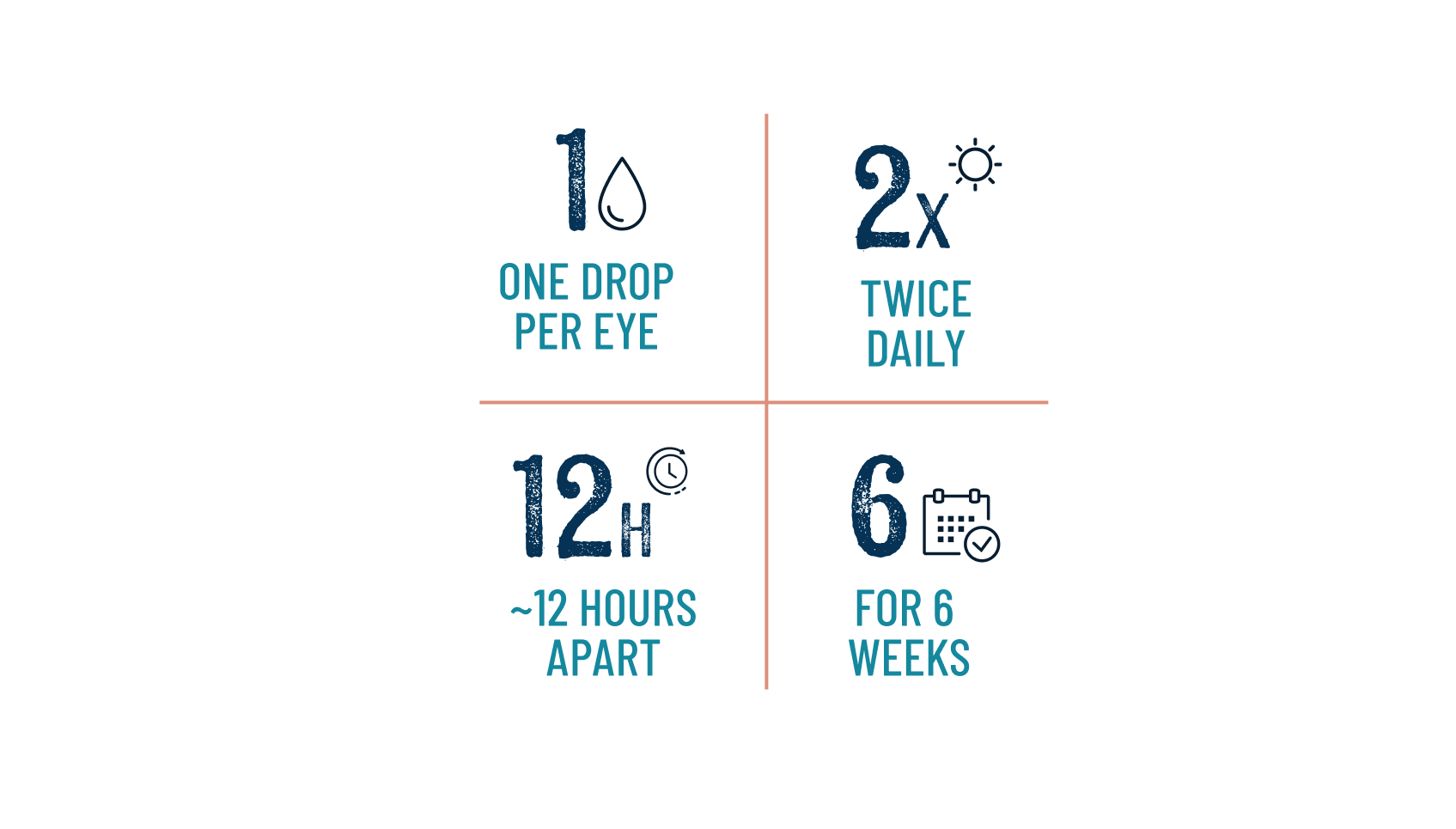
One drop per eye, twice a day (~12 hours apart), for 6 weeks.
You’ve received a prescription for XDEMVY®!
Here's What You Need to Know About Demodex Blepharitis (DB)

One drop per eye, twice a day (~12 hours apart), for 6 weeks.
DB is a common eyelid disease caused by an infestation of tiny Demodex mites.1,2 Many people have these mites, but sometimes, they can increase in number and cause problems such as eyelid redness, irritation, and crusties (collarettes).1,3
- It's not you, it's Demodex mites. A diagnosis of DB is not caused by you and does not imply poor hygiene.4,5
- When left untreated, DB can leave you more prone to other eye-related diseases.1
What Is XDEMVY and How Do You Take It?
XDEMVY is the first and only FDA-approved eye drop that targets and kills the Demodex mites that cause DB.6
DOSING INSTRUCTIONS
- Use 1 drop in each eye, twice daily, ~12 hours apart, for 6 weeks.
- Use XDEMVY every day and complete the full 6-week course of treatment.
- Consult with your doctor about continuing your eyelid hygiene routine.


Use this Dosing Guide to help keep on top of your daily doses of XDEMVY.
Download Dosing GuideAfter Treatment: What Comes Next?
Over time, mites may come back, so it’s important to see your eye doctor regularly. If signs and symptoms such as eyelid redness, itching, or crusties (collarettes) return, make an appointment to visit your eye doctor right away so they can check your eyelids for DB.
Be sure to follow up with your eye doctor to maintain your eyelid health. Your pharmacy can also be a resource for more information on XDEMVY.

XDEMVY SUCCESS STORIES
See how others have found relief from Demodex blepharitis with XDEMVY.

BROWSE HELPFUL
XDEMVY RESOURCES
Explore the resource library
to support your journey.

References: 1. Fromstein SR, Harthan JS, Patel J, Opitz DL. Demodex blepharitis: clinical perspectives. Clin Optom (Auckl). 2018;10:57-63. 2. Rhee MK, Yeu E, Barnett M, et al. Demodex blepharitis: a comprehensive review of the disease, current management, and emerging therapies. Eye Contact Lens. 2023;49(8):311-318. 3. Trattler W, Karpecki P, Rapoport Y, et al. The prevalence of Demodex blepharitis in US eye care clinic patients as determined by collarettes: a pathognomonic sign. Clin Ophthalmol. 2022;16:1153-1164. 4. Elston CA, Elston DM. Demodex mites. Clin Dermatol. 2014;32(6):739-743. 5. Bitton E, Aumond S. Demodex and eye disease: a review. Clin Exp Optom. 2020;46(9):1-9. 6. XDEMVY. Prescribing Information. Tarsus Pharmaceuticals Inc; 2023.


